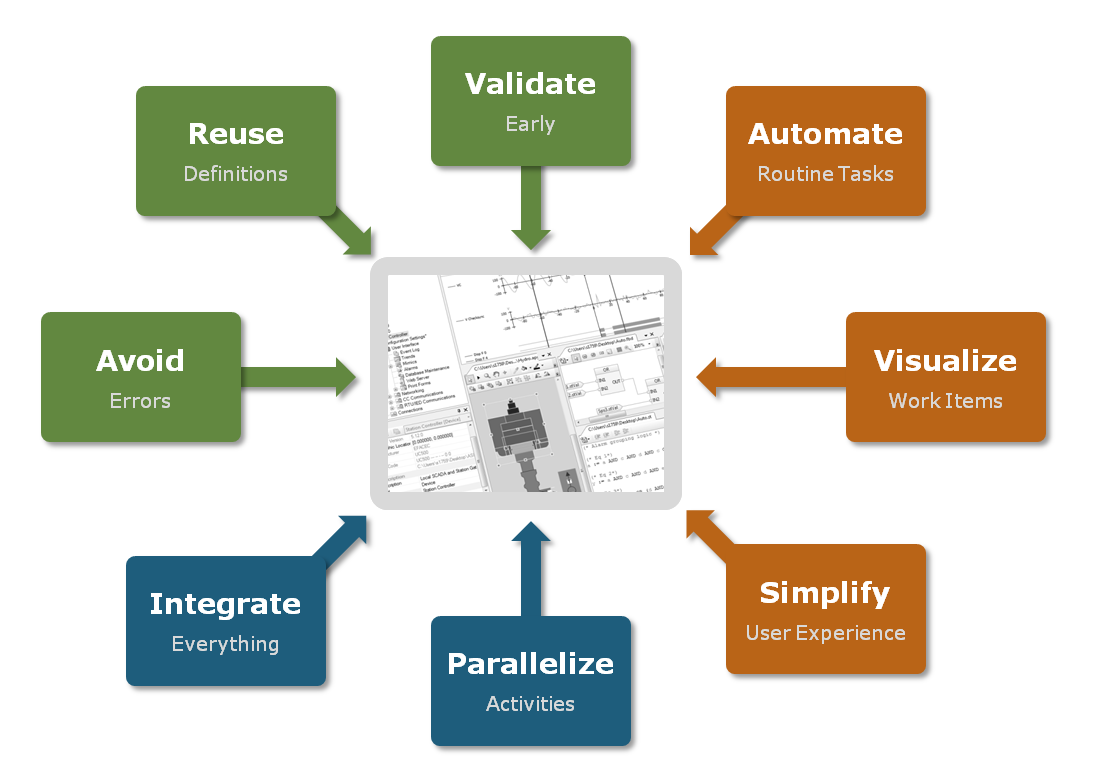 |
| Main Page | Power Systems Automation |
Nº 13 - 2009 |
||
| »» Automation Studio Designer | ||
The diagram editor provides a rich vector-based graphics model featuring sophisticated animation and symbols. It was developed with the most up-to-date software technologies and observes current standard usability patterns in one-line displays editing applications, thus providing a significant improvement in designer efficiency. These displays may be used in either local or remote HMI solutions, based on a Web platform. Besides the advantages of an integrated engineering environment (user-definable window positioning, drag-and-drop, hierarchical presentation of data, immediate presentation of descriptive information, etc.) the editor presents an intuitive and simplified configuration object-oriented model with features such as advanced ExcelTM integration, semantic copy-paste, use of templates and libraries or version management, allowing enhanced support for system life-cycle management of configurations. Another feature is the full engineering integration of CLP 500’s Central Units and IED with IEC 61850, allowing the user to straightforwardly create and share definitions via import/export of SCL (System Configuration Language) files. Compatibility has already been proven with devices of several manufacturers. Automation Studio combines both Designer and Explorer software modules and is part of the Efacec latest generation technology offering strategy. Its expandable architecture allows introducing specific end-user features. |
||
 |
||
